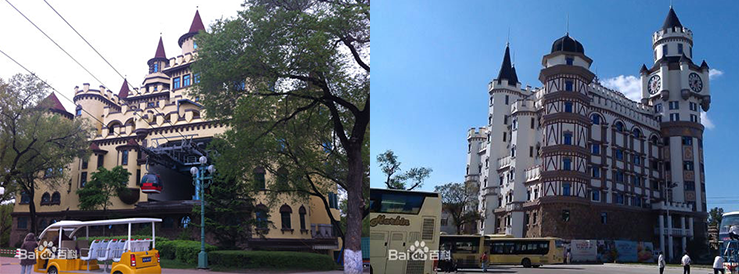
Songhua River Cableway (left) and Telêmaco Borba Aerial Tram (right). Images by Baidu and Alexandre Camargo.
Perhaps this site should be our Gondola Projects, in the plural. One of our ongoing missions is to track and compile the world’s urban gondola (map here). We’ve recently had a little help from cable car connoisseur A Maine Ski Lift Enthusiast.
He pointed out two utterly awe-inspiring if somewhat obscure and even bizarre urban cable cars (at least from our North American perspective).
Songhua River Cableway (松花江索道)
The Songhua River Cableway is located in Harbin, the very cold capital city of China’s northeast province of Heilongjiang. (How cold can it get there? Remember this blog is written by Canadians and the research for this entry was passed on by a reader from Maine!) From various online sources, we’ve gathered it was built in 1997 by Doppelmayr to cross the Songhua River and connect riders to the marvelously named major attractions in the city: Sun Island Scenic Area and Stalin Park/Flood Control Monument/Central Avenue – main pedestrian boulevard.
A roundtrip of USD$12.75 provides views from up to 70m high. A quick image search reveals this system’s coolest feature (or tackiest, depending on your taste, though you cannot argue its impact). The cable car is housed in two castles! They may appear somewhat strange and un-Chinese at first but Harbin has had significant influence from Russian culture throughout its history.
And for those unwilling to spend the money to board the cable car during winter, visitors can actually walk across the frozen Songhua river!
Telêmaco Borba Aerial Tram
While the Songhua River Cableway is purely a toys for tourist system, the Telêmaco Borba Aerial Tram is a true hybrid urban cable car. In other words, it not only serves a tourist function, but also a commuter purpose. The 1.3km system, located in Brazil’s Paraná state, was first opened in 1959 to transport workers to a pulp and paper mill. However, as you can see in the video below it naturally turned into a must-see and beloved attraction in the city.
Today, after more than 50 years in operation, the system is still estimated to attract 1,500 riders per day and approximately 500 tourists a week.

